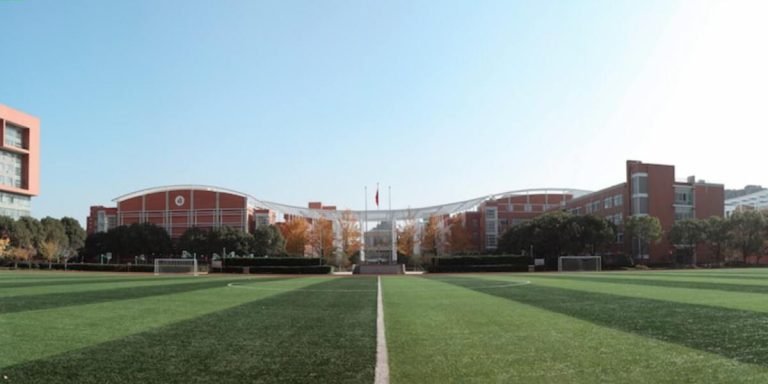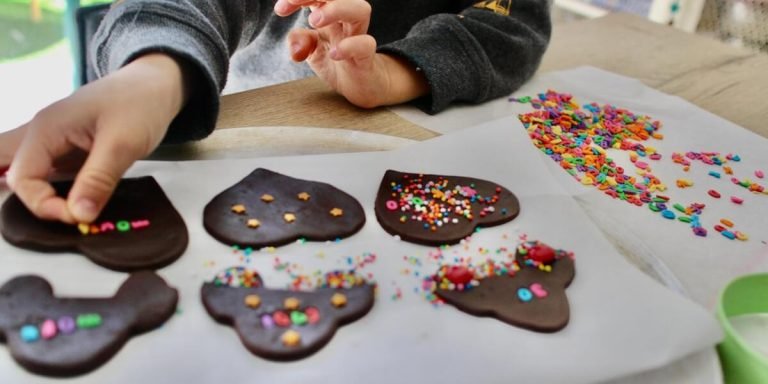Tactile Learners: Unfolding the Kinesthetic Approach in Childhood Education
In the vast spectrum of learning preferences, “tactile learners” stand out uniquely. This specific group consists of children who thrive by physically engaging with their environment to absorb knowledge. Their inherent attraction towards a hands-on approach isn’t just an inclination; it’s wired into their cognitive blueprint and determines how they learn best.
Understanding this mechanism is critically important in childhood education. It lays the foundation for Activity-Based Learning (ABL), a strategy that focuses on ‘doing’ rather than mere passive listening or reading. ABL stimulates tactile learners, fostering both intellectual growth and motor skill development simultaneously.
Did you know?
Did you know that research from the Dunn and Dunn Model shows children identified as tactile or kinesthetic learners make up about 5% of the population? This illustrates how rare this learning style is, underscoring the importance of specialized educational strategies.
Understanding Activity-Based Learning for Tactile Learners
Activity-based learning has developed into a powerful tool in childhood education, proving especially effective for tactile learners. As the name suggests, these are children who learn best through physical interaction and manipulation of objects. In traditional classrooms, tactile learners might struggle with abstract concepts or theories presented solely on paper or via oral lecture method.
However, when introduced to technology-integrated activity-based learning environments they thrive.
Understanding how this integration works is key to fostering an inclusive environment that caters to all types of students including tactile ones. Technology here does not refer solely to computers but involves a wide range of tools from interactive smart boards and 3D printing models right down to more rudimentary devices like calculators – anything that can convert theoretical knowledge into practical applications.
Moreover, as we stand at the threshold of 2023 it also becomes important to maintain relevance by keeping pace with emerging technologies such as virtual reality (VR) and augmented reality(AR). These present unprecedented opportunities for experiential learning where tactile learners don’t just get information served up two-dimensionally but rather actively participate in constructing their own understanding.
In conclusion then we see how embracing technology—both high-tech gadgets along with less advanced yet manipulable tools—in activity based lessons responds directly towards nurturing our young tactiles’ unique capabilities thereby ensuring they aren’t left struggling against conventional pedagogy designed only for visual and auditory senses alone.
Defining Activity-Based Learning in Context with Tactile Modalities
Activity-based learning, often referred to as hands-on or experiential learning, is an educational approach that engages tactile learners by making their education physical and interactive. This modality can be particularly effective for children who are kinesthetic or tactile learners – those who learn best when they’re using their hands and bodies.
Technology integration in 2023 is paving the way for augmented activity-based experiences, resulting in richer understandings. Let’s delve deeper into how technology aids this form of pedagogy:
1) **Immersive Experiences**: With crystal-clear virtual reality goggles, neat little holographic projectors, and immersive audio systems dominating classrooms today, activities aren’t just confined to building blocks anymore. Children could virtually visit Egypt while studying about pyramids!
2) **Coding & Robotics**: The modern curriculum encourages students’ interaction with coding programs like Scratch Jr or robotics kits such as Lego Mindstorms EV3 right from an early age; these resources enable a child’s direct manipulation of objects fostering cognitive development through problem-solving.
3) **Tangible User Interfaces (TUIs)**: TUIs allow digital information to be manipulated physically allowing abstract concepts becoming more concrete – aiding understanding tremendously! For instance “smart” play-dough used in elementary schools assists children visualize mathematical models better.
4)**Interactive Whiteboards:** These are not simply display boards but tools enabling active learner engagement facilitating collaborative exploration via touch response feature transforming passive listeners into interactors!
How Tactile Experiences Enhance Cognitive Development
“Activity-based learning in education manifests itself most strikingly with tactile learners. Unfolding a world of understanding through touch and hands-on activities, these youngsters explore their environments actively. This exploration is not merely physical but also cognitive as each interaction builds on the child’s perception, comprehension, and critical thinking skills.
We live today in an era where technology has become intertwined intrinsically with our way of life- this holds true even for childhood education settings too! When seamlessly integrated into activity-based modules for teaching at schools or home environments, it brings forth multiple advantages predominantly to enhance the learning outcomes specifically if your child happens to be a tactile learner.
Imagine pairing up 3D printing technologies with regular science lessons? That’s exactly what many educational institutions are doing right now all around the globe! The concept underlying here lies about enhancing spatial intelligence.
For instance – when children mould clay models or create structure using LEGO blocks under guided instruction they bridge intellectual concepts along with manual dexterity opening doorways towards better cognition.
Virtual Reality (VR) sets another perfect example showcasing how technological integration can boost engagement levels amongst tactice learners significantly higher than conventional schooling methods ever could have achieved alone! As sensory experiences heighten within VR spaces designed specially catering needs coming from specific curriculum areas such as geography or biology students find themselves immersed completely within virtual realms exploring & gaining firsthand experience pertaining subject matter without leaving classroom comforts!
Strategies to Implement Activity-Based Techniques for Effective Tactile Education
In today’s digitally charged world, integrating technology with activity-based techniques can serve as a game-changer for tactile learners. Also known as kinesthetic learners, these students learn best through direct involvement in their education. They prefer hands-on experiences and interactive sessions that allow them to understand the core concepts actively.
Through tools like virtual reality (VR) simulations or smart science labs, educators are now turning traditional classroom settings into immersive learning environments. These advanced technological platforms enable students to physically interact with educational content—transforming abstract theories into tangible experience! For instance, conducting an experiment virtually using VR goggles stimulates various senses simultaneously which imprints a lasting understanding of the subject matter on their minds.
Moreover incorporating digital games not only enhances engagement levels but also encourages problem-solving and critical thinking skills among kids—the cornerstones of 21st-century skill sets! Such blending of e-gaming with pedagogical practices brings about an element of fun while ensuring high retention rates—a win-win situation for both parties involved!
Therefore when applied strategically within classrooms or homeschooling set-ups these innovative solutions offer multiple pathways towards effective learning specifically designed for tactile individuals thereby giving teachers an opportunity to cater diverse needs present in mixed-ability groups without compromising academic standards.
Incorporating Hands-On Projects to Benefit Kinesthetic-Touch Learners
In our rapidly evolving educational landscape, it’s essential to stay ahead of the curve by integrating modern technology. Let’s discuss how we can accomplish this through hands-on projects specifically designed for tactile learners.
For maximum benefit from activity-based learning, especially for tactile learners, incorporate these project ideas into your lesson plan:
1. **Interactive Whiteboard Games:** Incorporate lessons on interactive whiteboards where students physically interact with the content displayed.
2. **Science Experiments:** Simple science experiments related to a curriculum theme provide an excellent opportunity for hands-on engagement.
3. **Coding Robots & Devices**: Teach basic programming skills using programmable robots or other mechanical devices available today like Lego Mindstorms EV3 which allow kids physical interaction while they practice coding.
4. **Augmented Reality (AR) Applications:** Leverage AR apps on tablets and smartphones which engage tactile leaners through touch interface while providing them enhanced visual context.
5**Virtual Simulations**: VR headsets offer immersive experiences allowing students direct interaction with virtual objects simulating real-life scenarios thereby offering great potential for creating engaging education environment meaningfully benefiting tactile learners.
Utilizing Sensory Stations: A Classroom Approach Tailored for the Physically Engaged
Sensory stations, an emerging trend in 2023’s educational field, are being lauded for their effectiveness when catering to tactile learners’ needs. Essentially they offer a hands-on approach designed specifically with physically engaged students in mind thereby fostering activity-based learning.
So how can you utilize sensory stations within your classroom? Here are some suggestions:
1. **Create Structured Environments:** Organize distinct areas within your class dedicated solely for sensory exploration – think sand trays for writing practice or textured materials such as play dough for shape creation.
2. **Incorporate Technology:** Make good use of tools like tablets equipped with interactive apps that stimulate motor skills while teaching fundamental concepts; this provides an effective merger between technology integration in education and activity-based techniques suitable for tactile learners.
3. **Plan Sensory-rich Activities:** Schedule times during the day where students have the liberty to engage fully at these stations; activities could include sorting objects by texture or building structures using blocks which subtly teach kids about shapes, sizes, weight etc.
4. **Encourage Peer Learning**: Allow student interactions at sensory stations promoting teamwork & social skills alongside physical engagement.
Assessing the Impact of Activity-Based Curriculum on Students’ Performance and Engagement
The advent of technology in the educational sector has revolutionized how learning takes place, particularly for tactile learners who grasp knowledge better through a hands-on approach. The implementation of an activity-based curriculum is one such stride that has seen significant advances. Instead of rote-memorizing concepts from textbooks, students are now able to engage with the material and thus gain deeper insights.
An assessment on this teaching methodology’s efficacy reveals a substantial improvement in students’ performance over traditional instructional methods. One key factor here is increased engagement – when pupils participate actively in lessons they assimilate information at levels far beyond passive instruction ever allowed them to reach before. Consequently, the understanding built up by these activities leads to improved application skills which translate into higher grades.
Moreover, benefits go past academic performance as other areas like critical thinking and problem-solving skills also see marked enhancements due to exposure gained during practical tasks undergone within an activity-based environment fostered by modern technology integration.
Measuring Academic Outcomes Through Active Participation Metrics
When we talk about activity-based curriculum in 2023, it’s impossible not to include tactile learners. These learners thrive on hands-on activities that awaken their senses, thus improving overall engagement and performance.
The real challenge lies within measuring academic outcomes through active participation metrics effectively. ABL requires a different set of measurement tools better suited for its dynamic features compared to conventional classroom settings.
Traditional assessment practices primarily rely on standardized tests which may overlook practical skills acquired through experiential drills in class. However, with ABL being increasingly adopted across curriculums worldwide integrating technology into education as well provides us with opportunities for innovative assessment methods.
One such method includes game-based assessments incorporated into fun educational apps or software programs that assess students’ progress based on their performances during engaging gameplay scenarios instead of mundane questionnaires or exams.
Lastly peer reviews can be another effective metric leading towards comprehensive understanding among students . Everyone gets involved reinforcing collaborative problem-solving teamwork while simultaneously honing evaluation feedback communication abilities .
Evaluating Emotional and Social Growth in a Kinesthetic Learning Environment
With the rapid advancements in technology and education, one key development that has gained significant attention is Activity Based Learning. It’s a modern pedagogical approach designed to facilitate effective learning outcomes among students, particularly tactile learners.
Firstly, let’s look at emotional growth – an aspect of utmost significance when it pertains to children’s overall development. The role of emotions in childhood learning can’t be downplayed as these feelings are influential drivers propelling both motivation and interest within tactile learners.
Activity-based curriculum presents opportunities for hands-on experiments while integrating advanced technological tools into lessons provides real-time experiences for young learners which trigger their curiosity. This immersive educational experience stirs up diverse emotions such as excitement or pride following achievements; this not only enhances their self-esteem but also moulds them into enthusiastic lifelong-learners who thrive on problem-solving tasks.
Conclusion
In conclusion, tactile learners add a dynamic element to classroom experiences. They embody the adage “learning by doing,” turning every touch and movement into an opportunity for knowledge acquisition. By embracing kinesthetic approaches in childhood education, we can effectively engage our little ones more interactively – nurturing their love for learning while strengthening their intellectual growth.
So why not dive deeper? Our website is packed with resources that push traditional boundaries and explore innovative ways of educating youngsters. It’s never been easier to give your child meet their potential or help your students shine through interactive lessons tailored specifically towards tactile learners!
We invite you peruse our wealth of information on educating children along with additional support material designed especially for parents and educators like you who want nothing but the best for them.







